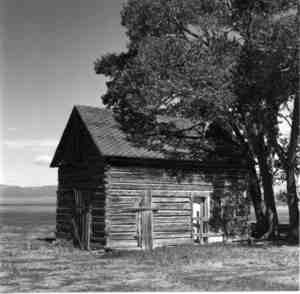Letter from Bob Cross, George Sibley
Sibleys in History – March 2006 – Colorado Central Magazine
Ed:
I thoroughly enjoyed your treatment of Capt. Pike’s journey [in the February edition]. Thank you for reminding me about the Red River Expedition of 1805. The mention of Peter Custis reminded me that he was a distant relative of George Washington and Robert E. Lee.
With that connection still rumbling around in my head, I turned a few pages and found George Sibley’s article. That triggered another clouded memory. Isn’t Sibley the name of Jefferson’s first Red River Indian Agent? So I looked it up. Sure enough, Dr. John Sibley was appointed “occasional agent” circa 1804 and considered by the Spanish administrator, Don Nemecio Salcedo, as a “revolutionist and lover of change” who had to be stopped. Makes you wonder if George is related.
Bob Cross
Northglenn
George responds
There’s a high probability that we are related; I’ll look it up. Some West Point captain named Sibley a generation or so ago undertook a pretty exhaustive genealogy of “Sibley in America,” most of whom track back to a John Sibley who came over with the Rev. Francis Higginson in 1629 to make way for Winthrop’s fleet the next year. Records from back in England indicate that Sibley probably went from jail to the ship, so he was probably a good candidate for America. The poor West Point guy was never able to trace himself back to that Sibley, but he lined out the 13 generations that led to this little twig on that many- branching tree.
From a Westerner’s perspective there were a lot of other “interesting” Sibleys noted in the book: Colonel Henry Harrison Sibley who quelled the last Sioux uprising in Minnesota and sent the survivors out into the plains, where they upped the general pressure; George Champlain Sibley, an “Indian factor” in the Kansas City area (Sibley, Missouri) who helped survey the Santa Fé Trail; Confederate General Henry Hopkins Sibley who led the Confederacy in the Battle of Glorieta Pass, the westernmost Civil War engagement, and probably also invented the “Sibley tent” and the “Sibley stove” to put in it. Sibley is probably not a name that carries much honor among the Indians.
But this is undoubtedly more than you wanted to know.
George Sibley
Gunnison
And Colorado Central amplifies
The 1862 Confederate invasion of the West was commanded by Brig. Gen. Henry Hopkins Sibley. Like many CSA officers, he had a West Point education and service in the U.S. Army, where he rose to the rank of major. Before the Civil War, he served in the West, where he “invented a conical tent modeled after the wigwams of the Sioux,” according to Shelby Foote’s Civil War trilogy. Thus the origin of the Sibley tent, which appears often in Civil War photographs of army camps — of either side, for both used it.
A website for Civil War reënactors explains that “These huge shelters were used widely by the military, mostly in winter camps. Circular in shape, these tents resembled a tipi with short walls around the bottom. They required only one tall pole in the middle for support, with ropes holding out the walls. They were very roomy and several soldiers could bunk comfortably in these tents. Although this would not be a common tent for civilian use, some refugees were housed in these by the military. Like the tipi, Sibley tents had an opening at the top to draft smoke from a woodstove or fire. With a heat source, these large tents were very warm and cozy for cold- weather use.”
We couldn’t find out much about the Sibley stove, also invented by H.H. Sibley. One antique dealer described one he had for sale as a “thin sheet- iron stove 28 inches high and 18 inches in diameter at its base. It utilized a 4- inch stove pipe.” (The dealer apparently sold that antique stove for $999 — or so it was posted.) Other references to the Sibley stove said it didn’t burn much wood, but didn’t give off much heat, either. It was in army use until World War II.
After serving the losing side in the Civil War, H.H. Sibley went to Egypt, where he was made inspector general of artillery. A short biography notes that “Unfortunately, General Sibley was an alcoholic, and also ran up a number of unpaid bills during his tenure in Egypt, including one for eating a cheese belonging to his landlord. The Khedive discharged him in 1873 for ‘physical disability.’ Denied royalties from his inventions, Sibley died impoverished and forgotten in 1886, his grave remaining unmarked until 1956.”
Sibley’s Confederate invasion began in El Paso. The idea was to march north, remove federal troops from New Mexico, seize the gold fields of Colorado, then march west to take California for the Confederacy. He was on his way to battle the federal soldiers at Fort Union, near present Las Vegas, N.M., when he was stopped at Glorieta Pass east of Santa Fé on March 26- 28, 1862. Some 300 Colorado volunteers, who had marched down from Denver, were instrumental in the Union victory; led by John M. Chivington (of later Sand Creek infamy), they got behind the Confederates and destroyed their supply train. Sibley had to retreat clear back to El Paso.
Later generations of Coloradans have not been nearly so successful in repelling invasions from Texas.
Ed Quillen


